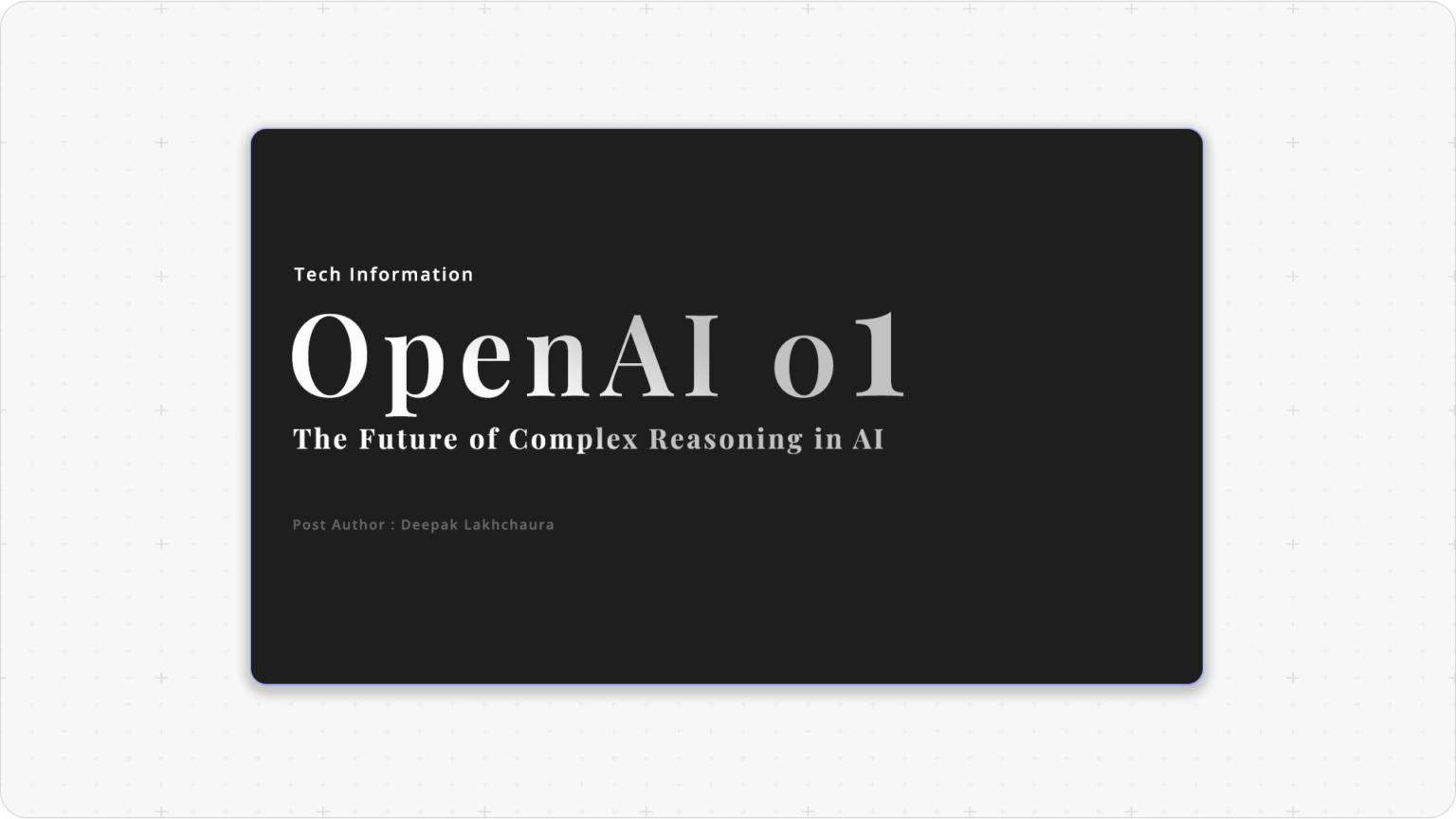On September 12, 2024, OpenAI has taken a significant leap forward with the introduction of OpenAI o1, a new AI model series designed to excel in complex reasoning tasks. This release represents a major advancement in artificial intelligence, focusing on deep problem-solving capabilities in areas like mathematics, science, and coding. In this article, we will explore the unique features of OpenAI o1, how it works, and why it marks a new era in AI-driven reasoning.
What is OpenAI o1?
OpenAI o1 is a cutting-edge AI model series that prioritizes complex reasoning over speed. Unlike previous models that generate quick responses, OpenAI o1 is designed to take its time, carefully considering problems before providing an answer. This deliberate approach allows it to tackle harder problems with greater accuracy and depth.
Key Features of OpenAI o1
Focus on Complex Problem-Solving
OpenAI o1 is specifically engineered to excel in challenging domains like advanced mathematics, scientific research, and competitive coding. By allowing the model to spend more time on each query, OpenAI o1 can deliver more nuanced and precise solutions to problems that require deep understanding and intricate reasoning.
Enhanced Reasoning Abilities
One of the standout features of OpenAI o1 is its ability to think more deeply before responding. This model is not just about generating text but about understanding the problem at a fundamental level and applying logical reasoning to solve it. This makes OpenAI o1 particularly useful for applications that require detailed analysis and thoughtful conclusions.
Improved Safety and Reliability
With great power comes great responsibility, and OpenAI o1 is built with enhanced safety features. The model includes advanced content moderation tools that help ensure responses are not only accurate but also safe and appropriate. This makes it a reliable tool for both professionals and educational purposes.
How Does OpenAI o1 Work?
OpenAI o1 operates by extending the processing time for each query, allowing the model to engage in more sophisticated reasoning. Here’s how it works:
- Input Analysis: When a query is input, OpenAI o1 begins by thoroughly analyzing the problem, breaking it down into smaller components that can be addressed individually.
- Reasoning Process: The model then engages in a more extended reasoning process, considering various potential solutions and evaluating the most logical outcomes. This process is what sets OpenAI o1 apart, as it allows for a deeper level of understanding and problem-solving.
- Response Generation: Finally, the model generates a response that is not only accurate but also deeply considered. This results in higher-quality outputs that are well-suited to complex challenges.
Applications of OpenAI o1
OpenAI o1’s advanced reasoning capabilities open up new possibilities across various fields:
- Scientific Research: The model can assist researchers in solving complex equations, modeling scenarios, and analyzing data with greater accuracy.
- Educational Tools: OpenAI o1 can be used in educational settings to help students and educators tackle difficult problems in subjects like mathematics and physics.
- Coding and Development: The model’s ability to solve intricate coding challenges makes it a valuable tool for developers looking to overcome tough programming obstacles.
Frequently Asked Question
How is OpenAI o1 Different from Previous Models?
OpenAI o1 differs from earlier models by focusing on deep, complex reasoning. It spends more time processing each query, allowing for a more thorough analysis and better solutions to difficult problems.
Can OpenAI o1 Be Used for General Purposes?
While OpenAI o1 excels at complex reasoning, it can still be used for general purposes. However, its strength lies in solving challenging problems that require more thoughtful and detailed analysis.
How Can I Access OpenAI o1?
ChatGPT Plus and Team users can access the latest model right away. Starting next week, users of ChatGPT Enterprise and Edu will gain access to new models. Developers in API usage tier 5 can begin experimenting with these models immediately, with a current rate limit of 20 requests per minute (RPM). These limits may increase after further testing. Please note, the API doesn’t yet support function calling, streaming, or system messages. For details, refer to the API documentation.
Additionally, OpenAI is planning to offer access to the o1-mini model for all ChatGPT Free users soon.
Is OpenAI o1 Safe to Use?
Yes, OpenAI o1 includes enhanced safety features designed to ensure that its outputs are appropriate and reliable. This makes it a trustworthy tool for both professional and educational use.
Conclusion
OpenAI o1 represents a significant advancement in the field of artificial intelligence, offering unprecedented capabilities in complex reasoning and problem-solving. With its focus on deep analysis and thoughtful responses, OpenAI o1 is set to become a vital tool across various industries, from scientific research to education and software development.
